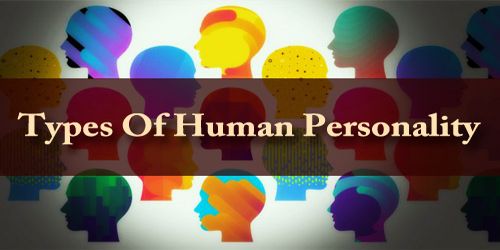Reductionism is the complement of holism, it believes that a system or entity is the sum of its parts or components, and understanding the basic components or parts can give us an understanding of the entire system. Here, again, this concept can be better understood with an analogy. A lumped electrical circuit consisting of separable elements like resistance, capacitance, and inductance can be analyzed as a sum of its individual parts.
It is an approach that breaks down complex behaviors into simpler and separate components. This approach argues that explanations begin at the highest level of explanation then progressively works it’s way down:
- The highest level: social and cultural explanations for behavior
- The middle level: psychological explanations for behavior
- The lowest level: biological explanations for behavior
Environmental reductionists believe that behavior can be reduced to a relationship between behavior and events in the environment and that behavior is explained by past experiences. For example, the social learning theory proposes that children will copy the behavior of their role models (often a same-sex parent).
Biological reductionists argue that all human behavior can be explained, or reduced to, a physical explanation. Genes, neurotransmitters, hormones, and more can all influence our behavior, biological reductionists believe that biology alone can explain human behavior.
Experimental reductionism reduces complex behaviors to isolated variables which can be manipulated in an experiment. They believe that these variables can be measured to determine causal relationships.
Interactionism is an alternative approach to reductionism, focusing on how different levels of analysis interact with one another. It differs from reductionism since an interactionism approach would not try to understand behavior from explanations at one level, but as an interaction between different levels.
Examples of Reductionism in Psychology –
- A reductionist approach is useful in understanding human genetics. This approach is also useful in predicting weather patterns. Computer simulated three-dimensional modeling is also largely based on a reductionist approach, wherein the bigger model is broken down into smaller components for easier simulation.
- Explanations for the cause of mental illnesses are often reductionist. Genetics and neurochemical imbalances are frequently highlighted, as being the main cause of these disorders. In the case of schizophrenia for example excess production of the neurotransmitter dopamine is seen as a possible cause. This view clearly has implications for treatment. Gender can also be reduced to biological factors (e.g. hormones). Also, language can be reduced to structures in the brain, e.g. Broca’s area, Wernicke’s area (but holism could state: influence of family, education, social class on language). Another example of biological reductionism is aggression – e.g. testosterone levels.
- Structuralism and Behaviorism in psychology are examples of reductionism. Structuralism treats the adult mind as a sum total of experience from birth to the present. Behaviorism is an analysis of elements that define human behavior.
The term ‘Holism’ is derived from the Greek word ‘holos’ meaning all, whole or entire. It was introduced by Jan Smuts, an African Statesman, in his book ‘Holism and Evolution’ (1926). He defined it as “the tendency in nature to form wholes that are greater than the sum of the parts through creative evolution.” In philosophy, any doctrine that prioritizes the whole over its parts is holism.
Confirmation holism was a theory put forth by the American philosopher Quine. It states that no individual statement is subject to an empirical test, but only to a set of statements (whole theory). Functionalism in philosophy is based on holism. Semantic holism states that words can be understood semantically only by referring to the language they belong to.
Similarly, humanistic and cognitive psychologists also follow a holism approach. The humanistic approach argues that actions as a whole form an identity; so a lack of ‘wholeness’ or identity leads to a mental disorder. Cognitive psychologists believe that the network of neurons in our brain (which are formed and destroyed by environmental experiences) acts differently as a whole than as individual components.
This approach argues that individual components aren’t as important in explaining behavior than how all these components work together as a whole.
Reductionist explanations, which might work in some circumstances, are considered inappropriate to the study of human subjectivity because here the emergent property that we have to take account of is that of the “whole person”. Otherwise, it makes no sense to try to understand the meaning of anything that anybody might do.
Examples of Holism in Psychology –
- Humanistic psychology investigates all aspects of the individual as well as the interactions between people.
- Social Psychology looks at the behavior of individuals in a social context. Group behavior (e.g. conformity, de-individualization) may show characteristics that are greater than the sum of the individuals which comprise it.
- Psychoanalysis – Freud adopted an interactionist approach, in that he considered that behavior was the result of dynamic interaction between the id, ego, and superego.
- Abnormal psychology – mental disorders are often explained by an interaction of biological, psychological, and environmental factors. An eclectic approach to therapy is often taken using drugs and psychotherapy.
- Perception – This is where the brain understands and interprets sensory information. Visual illusions show that humans perceive more than the sum of the sensations on the retina.
The Difference –
- Emotions like anger or sarcasm cannot be understood by studying the individual body parts. They can only be studied as a whole; with a holistic point of view.
- ‘Turbulence’, a phenomenon studied in fluid dynamics involving the irregular motion of air, cannot be explained by scientific reductionism.
- In neurology, proponents of holism argued that the brain was a homogeneous part with no specific subparts; while localization argued that the brain was organized in functionally distinct cortical areas.
Reductionism is when complex behaviors are separated into simpler components; in contrast, the holism approach looks at it as a whole. It can overlook other causes behind behavior and is in danger of over-simplifying human behavior.
Holism makes it difficult to prioritize and use only one or two factors as a basis for therapy.
Information Sources:
















